Abstract
The frequency of association of spore loci with the "old" and "new" ends of rod-shaped sporangia in batch cultures of Bacillus megaterium ATCC 19213 was estimated by phase contrast microscopy. The analysis was facilitated by (i) the association of most of the sporangia into chains of two to five sporangia and (ii) the occurrence of two types of cross wall distinguishable by their degree of splitting. It was concluded that a newly formed spore is located at the "old" end of a sporangium. By inference, the sporulation division septum locus is distal to the ultimate normal cell division septum, i.e., proximal to the "old" pole of the B. megaterium sporangium. This result is discussed in relation to deoxyribonucleic acid segregation during sporulation.
Full text
PDF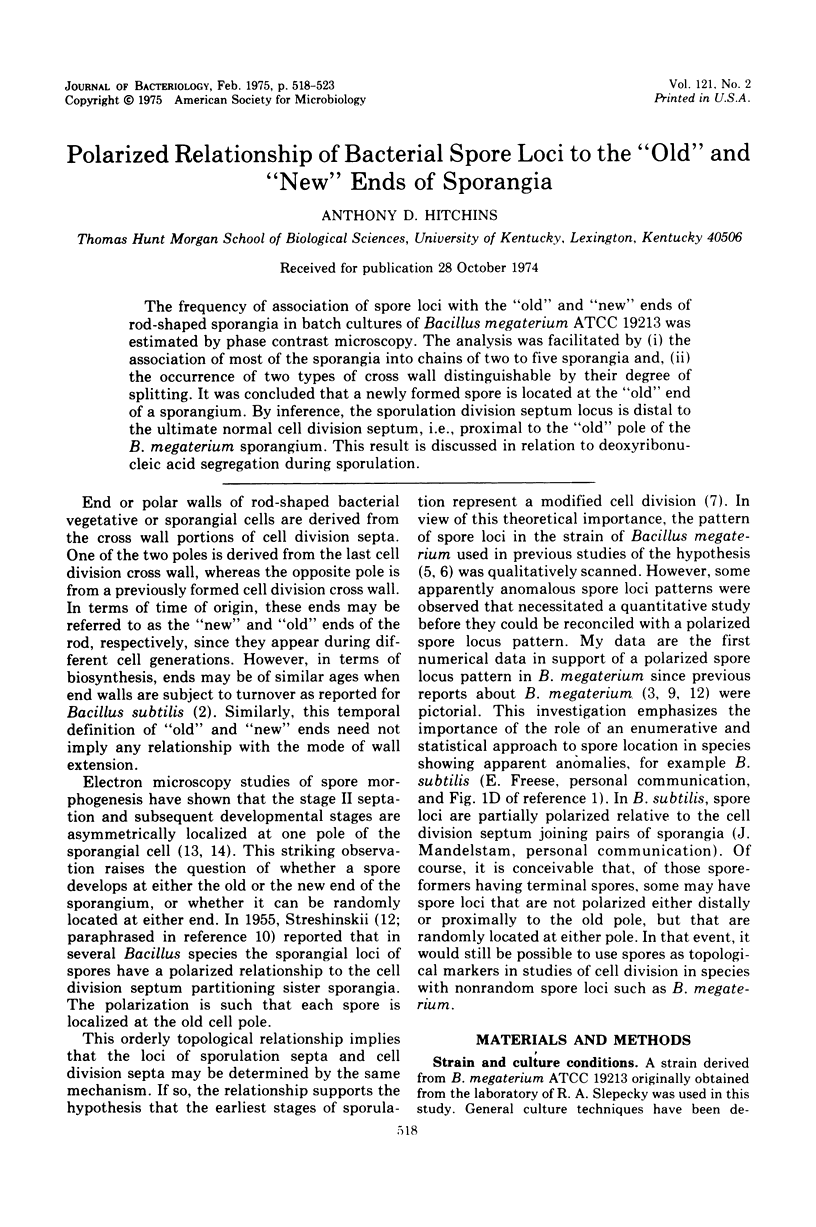
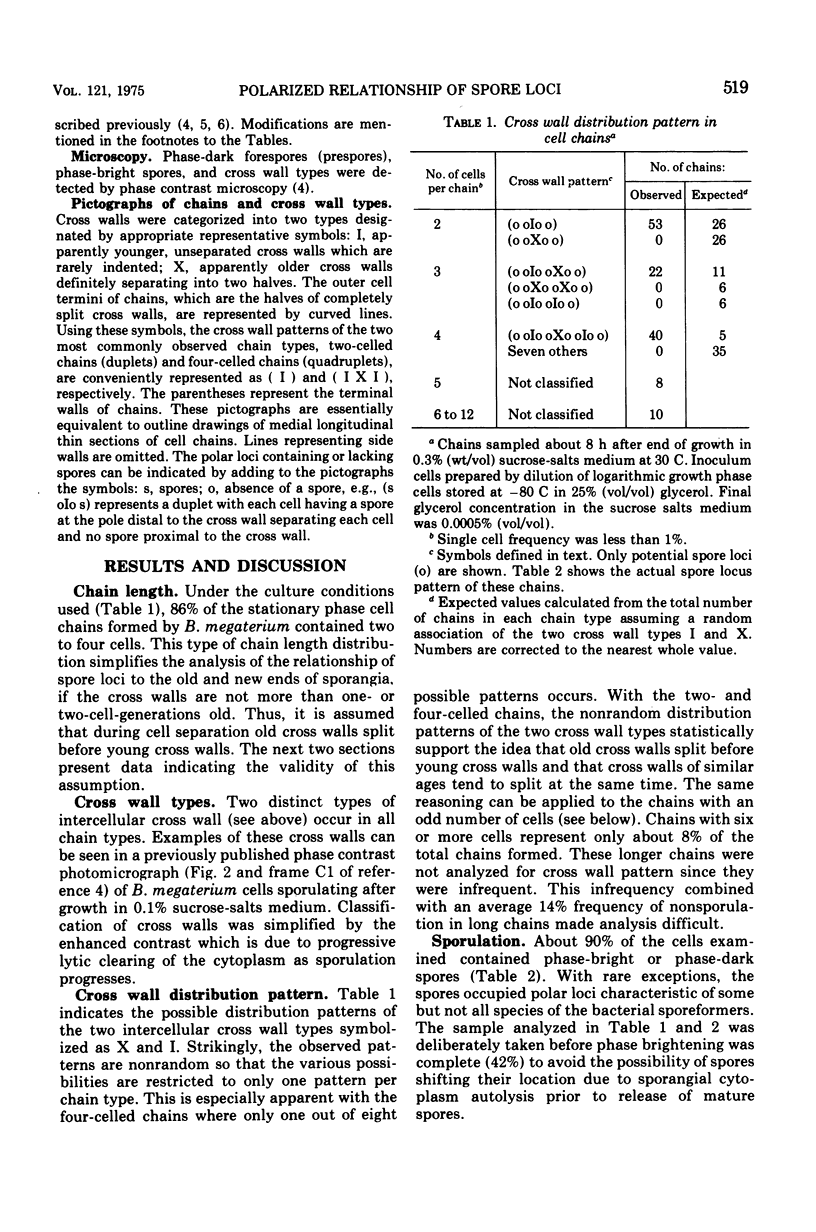
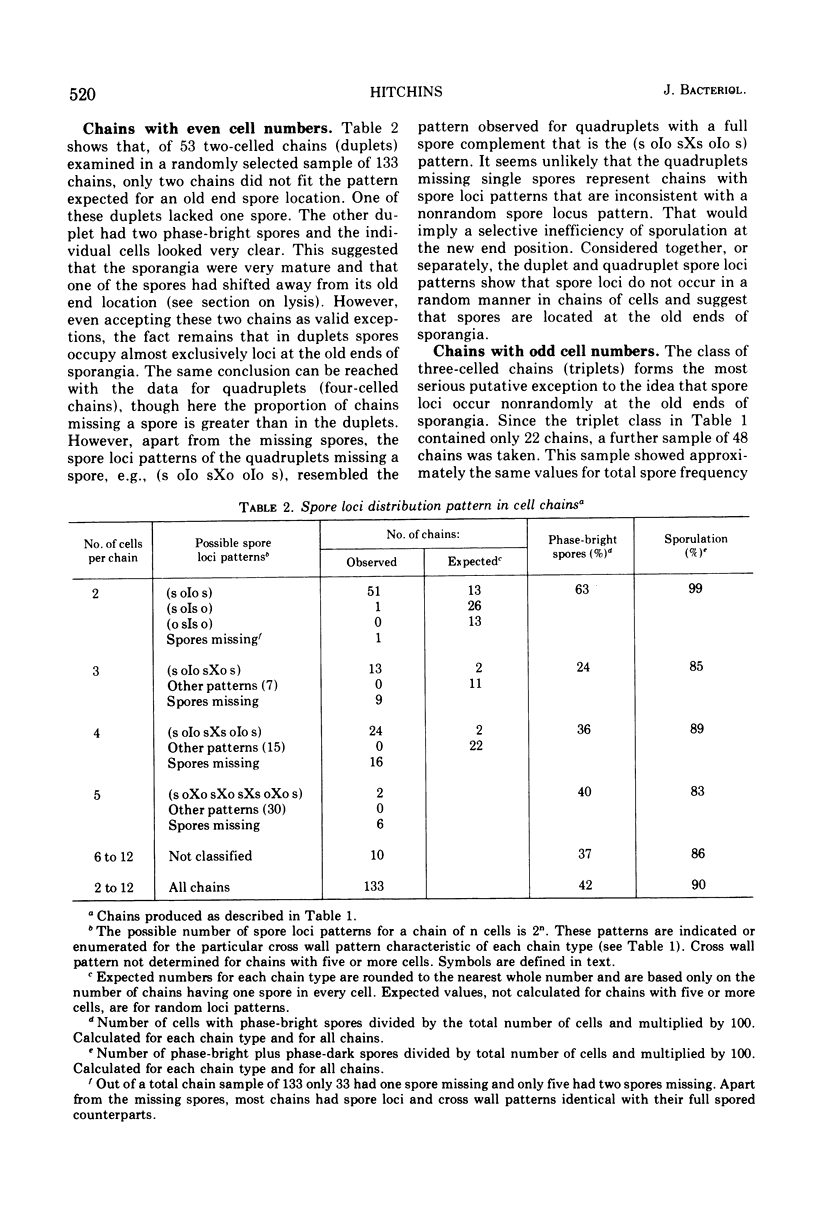
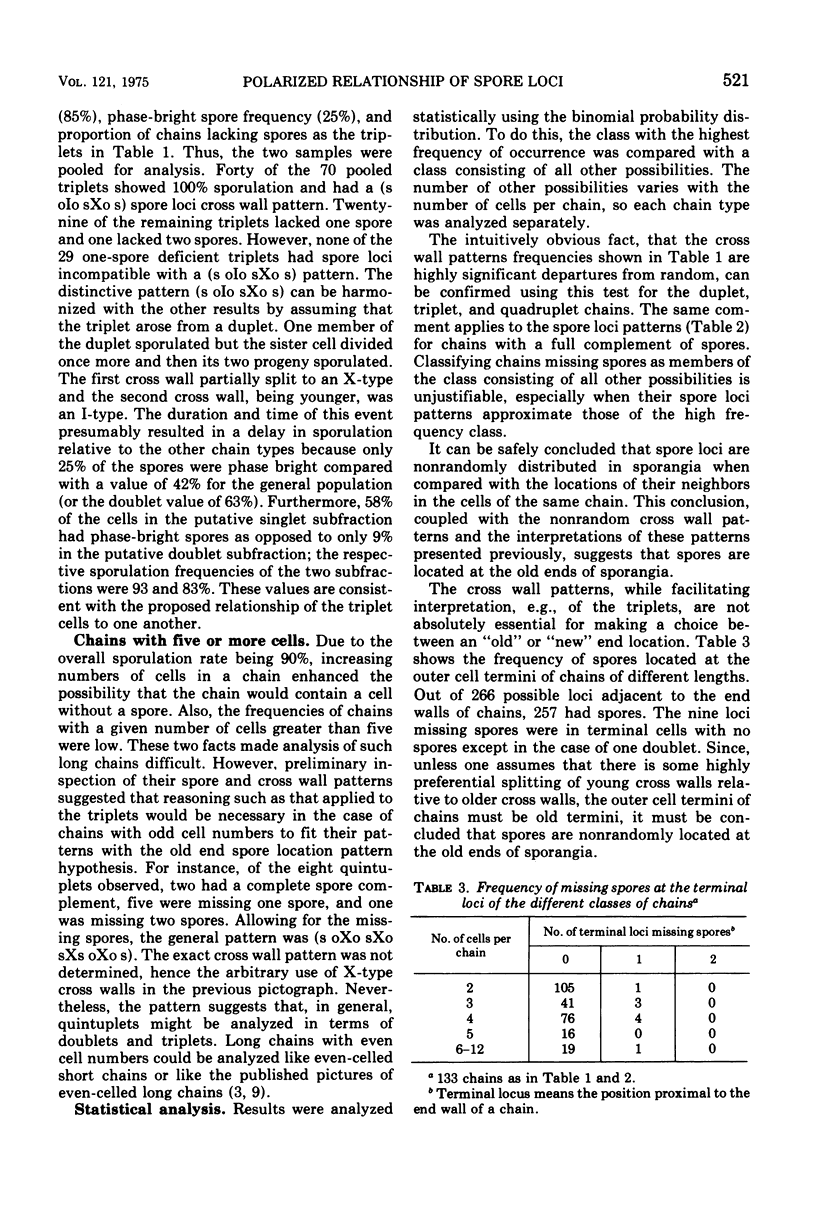
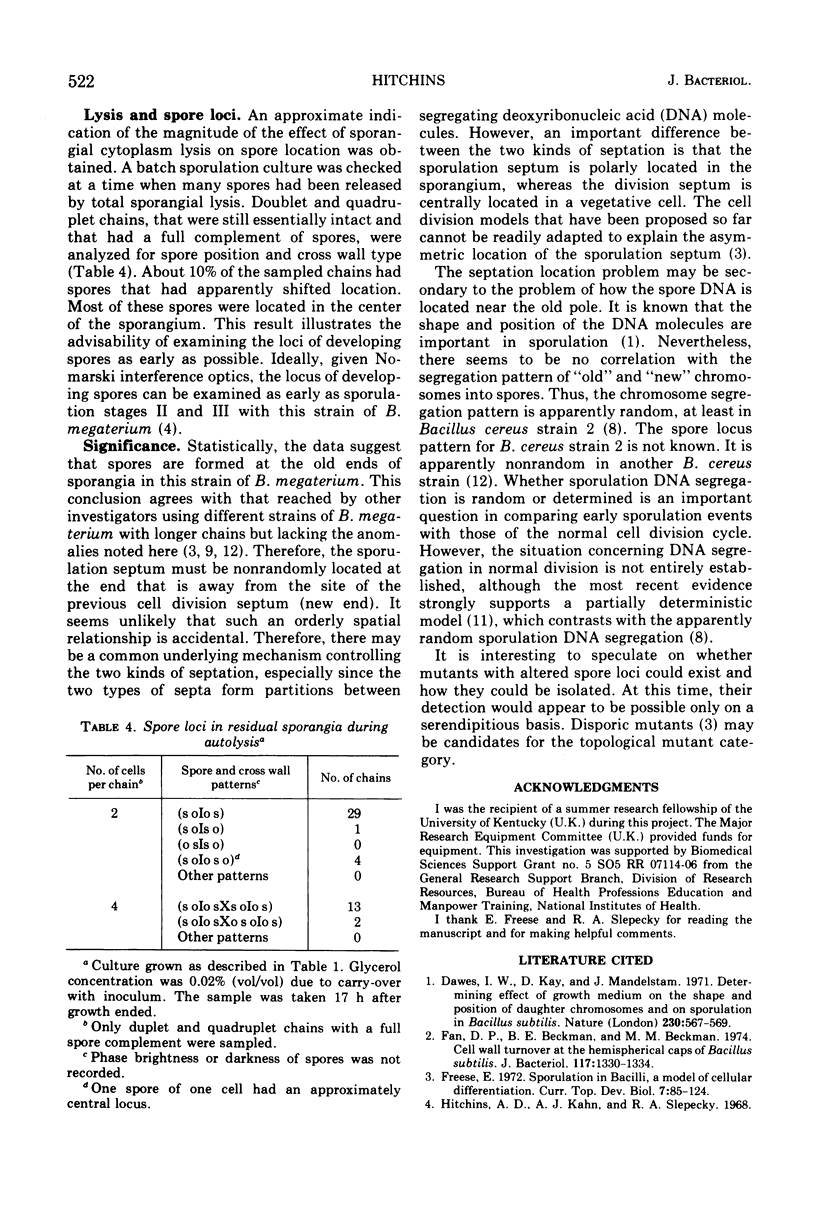
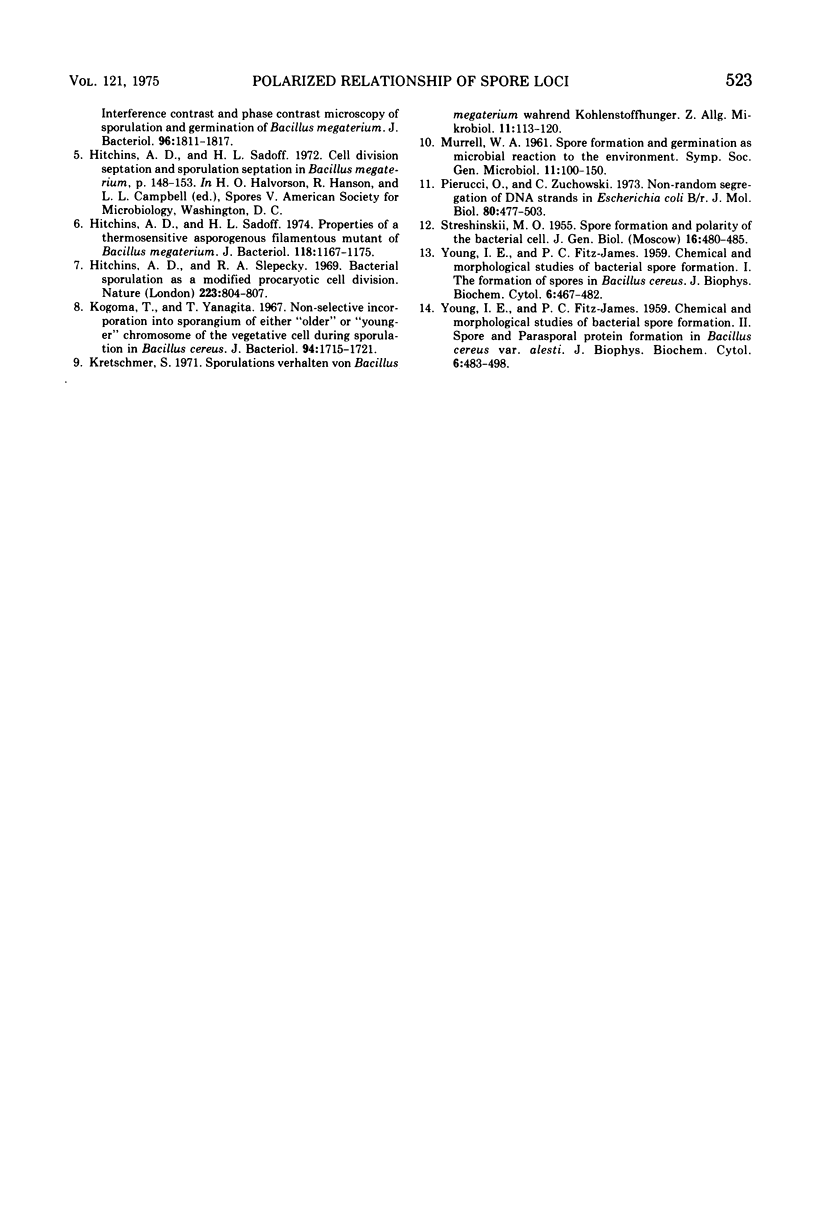
Selected References
These references are in PubMed. This may not be the complete list of references from this article.
- Dawes I. W., Kay D., Mandelstam J. Determining effect of growth medium on the shape and position of daughter chromosomes and on sporulation in Bacillus subtilis. Nature. 1971 Apr 30;230(5296):567–569. doi: 10.1038/230567a0. [DOI] [PubMed] [Google Scholar]
- Fan D. P., Beckman B. E., Beckman M. M. Cell wall turnover at the hemispherical caps of Bacillus subtilis. J Bacteriol. 1974 Mar;117(3):1330–1334. doi: 10.1128/jb.117.3.1330-1334.1974. [DOI] [PMC free article] [PubMed] [Google Scholar]
- Freese E. Sporulation of bacilli, a model of cellular differentiation. Curr Top Dev Biol. 1972;7:85–124. doi: 10.1016/s0070-2153(08)60070-8. [DOI] [PubMed] [Google Scholar]
- Hitchins A. D., Kahn A. J., Slepecky R. A. Interference contrast and phase contrast microscopy of sporulation and germination of Bacillus megaterium. J Bacteriol. 1968 Nov;96(5):1811–1817. doi: 10.1128/jb.96.5.1811-1817.1968. [DOI] [PMC free article] [PubMed] [Google Scholar]
- Hitchins A. D., Sadoff H. L. Properties of a thermosensitive asporogenous filamentous mutant of Bacillus megaterium. J Bacteriol. 1974 Jun;118(3):1167–1175. doi: 10.1128/jb.118.3.1167-1175.1974. [DOI] [PMC free article] [PubMed] [Google Scholar]
- Hitchins A. D., Slepecky R. A. Bacterial sporulation as a modified procaryotic cell division. Nature. 1969 Aug 23;223(5208):804–807. doi: 10.1038/223804a0. [DOI] [PubMed] [Google Scholar]
- Kogoma T., Yanagita T. Nonselective incorporation into sporangium of either "older" or "younger" chromosome of the vegetative cell during sporulation in Bacillus cereus. J Bacteriol. 1967 Nov;94(5):1715–1721. doi: 10.1128/jb.94.5.1715-1721.1967. [DOI] [PMC free article] [PubMed] [Google Scholar]
- Kretschmer S. Sporulationsverhalten von Bacillus megaterium während Kohlenstoffhunger. Z Allg Mikrobiol. 1971;11(2):113–120. [PubMed] [Google Scholar]
- Pierucci O., Zuchowski C. Non-random segregation of DNA strands in Escherichia coli B-r. J Mol Biol. 1973 Nov 5;80(3):477–503. doi: 10.1016/0022-2836(73)90417-8. [DOI] [PubMed] [Google Scholar]
- YOUNG I. E., FITZ-JAMES P. C. Chemical and morphological studies of bacterial spore formation. II. Spore and parasporal protein formation in Bacillus cereus var. alesti. J Biophys Biochem Cytol. 1959 Dec;6:483–498. doi: 10.1083/jcb.6.3.483. [DOI] [PMC free article] [PubMed] [Google Scholar]


